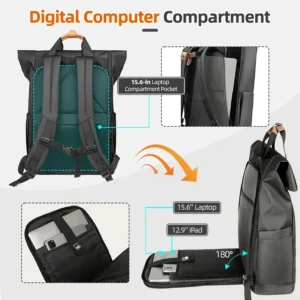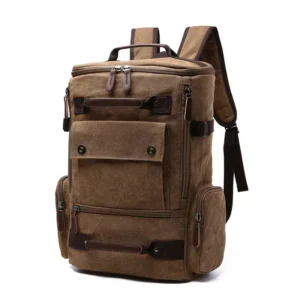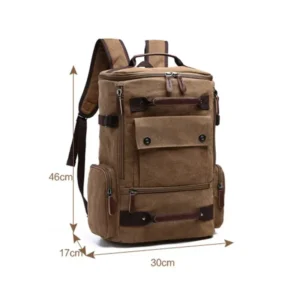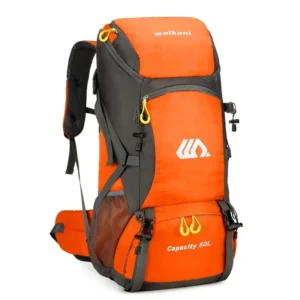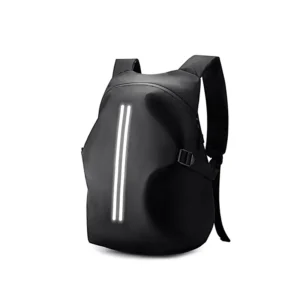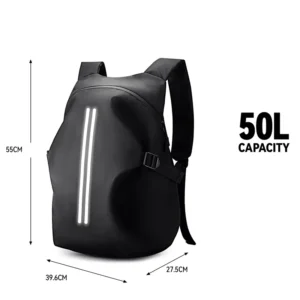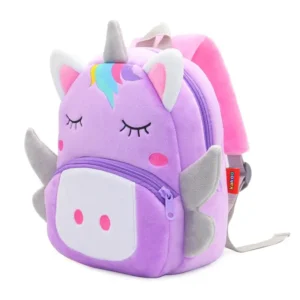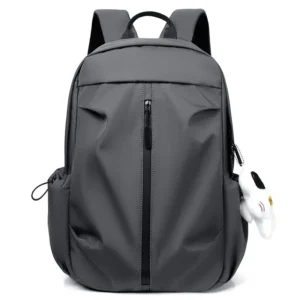Understanding the Ideal Backpack Capacity for Your Needs
Why Backpack Capacity Matters
Choosing the right backpack capacity is crucial for any travel or outdoor enthusiast. It determines how much gear you can carry, impacting comfort and convenience on your adventures. A well-chosen capacity ensures you have enough room for essentials while avoiding overpacking, which can lead to unnecessary strain. Backpack capacity is typically measured in liters, providing a standardized way to compare sizes. Understanding your specific needs and typical uses, such as day hikes, weekend getaways, or extended travels, will guide you in selecting the perfect size. Explore more about backpack designs at Backpack-Design.com.

The Science Behind Backpack Sizing
Backpack sizing isn't just about the numbers; it's a science that involves the balance of weight distribution, ergonomics, and space management. Manufacturers spend considerable time researching human anatomy to create backpacks that conform comfortably to your back. The right capacity directly impacts this ergonomics; for instance, a backpack that's too large or too small can compromise weight distribution, putting strain on your shoulders, back, and hips. Understanding torso length and hip belt positioning further influence how a backpack fits when loaded to its capacity. Coupling the right capacity with these ergonomic considerations ensures a comfortable and supportive carrying experience.
-
$59.90 Select options This product has multiple variants. The options may be chosen on the product page
-
$59.90 Select options This product has multiple variants. The options may be chosen on the product page
-
$45.90 Select options This product has multiple variants. The options may be chosen on the product page
Comparing Backpack Capacities: Daypacks vs Travel Packs
When comparing backpack capacities, it’s essential to distinguish between different types of backpacks: daypacks and travel packs. Daypacks usually offer a capacity ranging from 10 to 30 liters, suitable for short outings, commutes, or minimalistic trips. They are tailored for lightweight carrying and focus on mobility rather than storage. In contrast, travel packs start at 30 liters and can go beyond 70 liters, designed for longer trips where carrying extra gear is necessary. They often include additional compartments for organization. Choosing between them depends on your specific needs; daypacks are ideal for short, spontaneous adventures, while travel packs cater to extended explorations where additional gear is required.
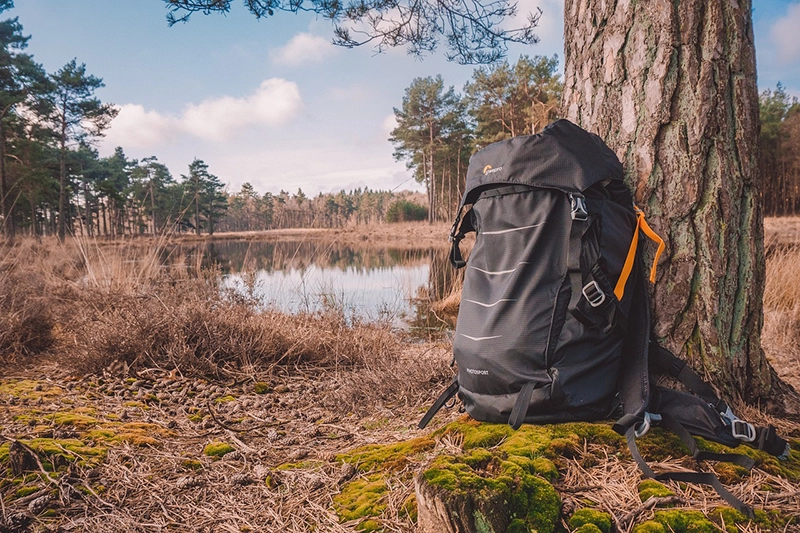
The Advantages of Choosing the Right Backpack Capacity
Selecting the right backpack capacity offers numerous advantages beyond merely fitting your belongings. First, it ensures comfort by distributing weight appropriately, minimizing fatigue during extended use. It also enhances efficiency, allowing quick access to your essentials without rummaging through an overly packed bag. A well-sized backpack promotes better organization since each item has designated space without being crammed. Furthermore, it can enhance your posture since the weight is centered, reducing potential strain on your back and shoulders. When traveling or hiking, every ounce matters; therefore, the right capacity reduces the likelihood of overloading, making your journey enjoyable and hassle-free.
-
$39.90 Select options This product has multiple variants. The options may be chosen on the product page
Adjusting Your Backpack Capacity for Different Activities
Adapting your backpack capacity based on the activity can maximize your experience and comfort. For instance, a day hike requires a different setup than a weekend camping trip. On day hikes, you'll need a smaller capacity focusing on essentials like water, snacks, and a light jacket, suggesting a 15-25 liter bag. In contrast, a weekend camping trip may demand a larger capacity, around 50 liters, to accommodate a tent, sleeping bag, clothing, and cooking supplies. This adaptability ensures you're always prepared without carrying excess weight. Evaluate the gear essential for each activity to determine the optimal backpack capacity, ensuring a convenient and comfortable journey every time.
-
$79.90 Select options This product has multiple variants. The options may be chosen on the product page
-
$39.90 Select options This product has multiple variants. The options may be chosen on the product page
-
$24.90 Select options This product has multiple variants. The options may be chosen on the product page
-
$54.90 Select options This product has multiple variants. The options may be chosen on the product page
Choosing Backpack Capacity for Different Weather Conditions
Weather conditions play a vital role in determining the appropriate backpack capacity. Warmer climates might require less clothing, reducing the need for extra space, whereas colder environments necessitate more clothing layers, thereby increasing the required capacity. In rainy conditions, additional compartments for dry storage and quick access to rain gear become crucial, suggesting a larger and more compartmentalized backpack. Conversely, hot and dry weather might prioritize a streamlined design for ventilation, meaning a smaller capacity could suffice. Tailoring your backpack capacity to weather conditions ensures not just comfort but also protection for your gear, maintaining readiness for any forecasted weather surprise.
How to Maintain Your Backpack for Longevity
Maintenance is key to ensuring your backpack lasts, maintaining its performance over the years. Start by cleaning it regularly, based on usage and exposure to dirt. Spot clean stains with a gentle soap and water solution. Empty your backpack and allow it to air out after trips to prevent odor buildup. Regularly check for any wear and tear, especially around zippers, straps, and buckles, repairing them promptly to avoid further damage. Proper storage, like hanging it or placing it in a cool, dry place, prevents undue pressure on the materials. Keep your backpack in top condition through these practices, ensuring it effectively supports your adventures with the right capacity usage.
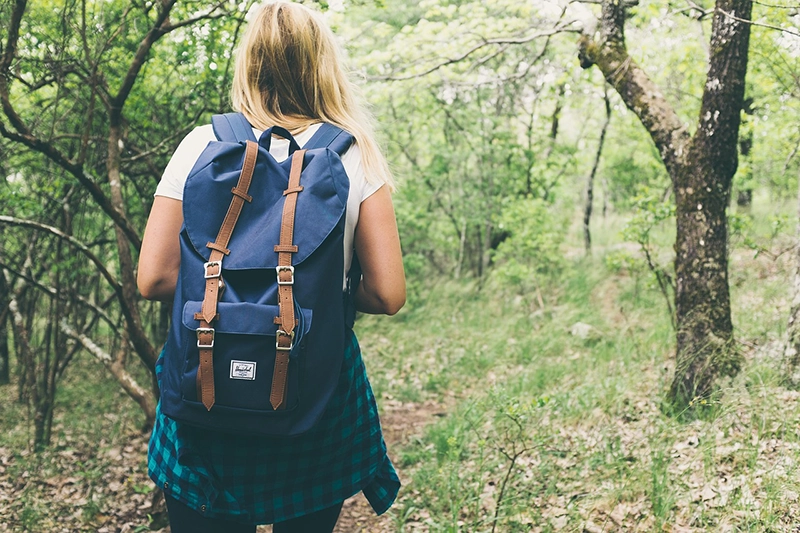
Final Thoughts on Choosing the Right Backpack Capacity
Choosing the right backpack capacity blends science, practicality, and personal preference. From understanding ergonomic designs and different types of backpacks to considering the influence of weather and activity-specific needs, capacity selection is a multi-faceted decision. The right capacity bolsters comfort, organization, and weight distribution, enhancing every journey's experience. As each expedition varies, adaptability and contextual understanding of what you require play significant roles. By maintaining your backpack well, you not only extend its life but maximize comfort and utility tailored to your adventures. Ultimately, the right backpack capacity ensures you're prepared, whether it's for an urban commute or an outdoor escapade.





